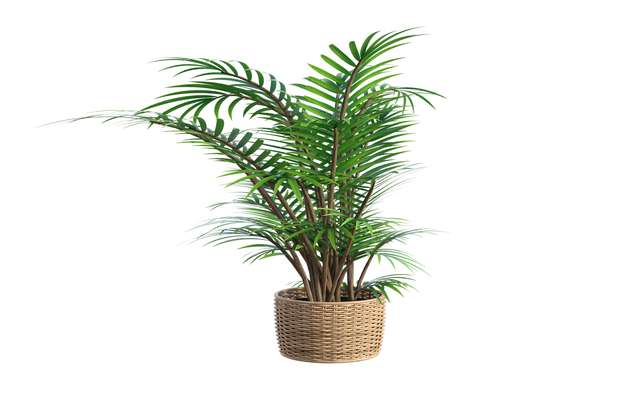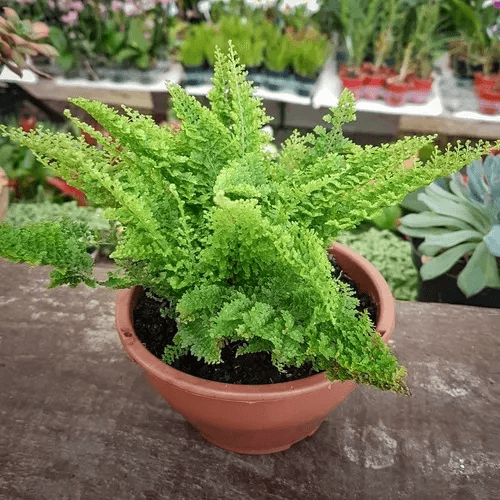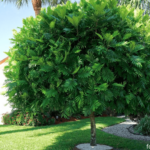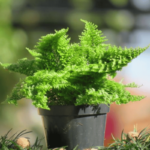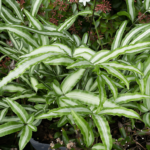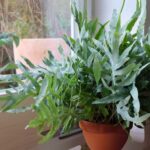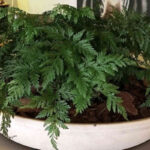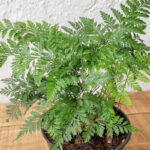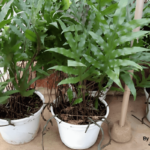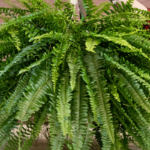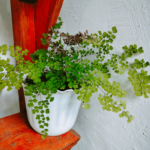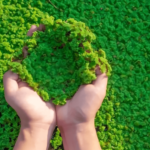Who hasn’t dreamed of having a garden with beautiful ferns?
I know, it might sound complicated, but in fact, it’s very simple.
Get ready, because…
In this article, you will learn how to easily cultivate your ferns, so they become beautiful and lush.
Why Take Care of Ferns?
There are several reasons to have a fern in your home.
- They are widely used in garden and home decor.
- Used in weddings.
- Can live up to 100 years depending on their species and cultivation.
- Improve the air quality where they are grown.
- Are easy to cultivate.
As you can see, it’s not just the beauty of ferns that attracts cultivators.
If you are looking for an easy and fun plant to cultivate, this is the ideal choice.
How to Care for Ferns
Like orchids, ferns have different species, but unlike orchids, most of these species have similar cultivation requirements.
Even so, remember that these species can also encounter problems.
Therefore, if your fern has:
- Yellow leaves
- Wilting leaves
- Darkened leaves
- Attacked by pests and fungi
Continue reading this article, because you will learn how to cultivate ferns in a professional way.
1. Watering
Let’s start with one of the most confusing factors among cultivators, watering (but first, watch the video above).
Ferns are plants that love moisture.
Therefore, it is extremely important that the soil remains consistently moist.
But remember, moist soil is different from waterlogged soil.
To check if it’s time to water your fern, use the tip of a pencil.
- Sharpen a pencil
- Stick it into the soil
- Check the color of the pencil tip.
- If it changes color, the soil is still moist, so wait.
- If it doesn’t change, the soil is dry, so water.
The ideal watering should be done just before the soil dries out, and if possible, avoid watering the leaves.
Usually, you will water your fern several times a day.
A very useful tip:
- Ferns with little water turn yellow.
- Ferns with excess water have rotting rhizomes.
2. What’s the Best Pot?
As mentioned earlier, ferns are plants that love moisture, so the chosen pot must retain moisture well for this plant.
Two commonly used options are:
- Plastic pots
- Clay pots with internal waterproofing to prevent clay from absorbing soil moisture.
- Coir pots (peat pots)
Coir pots are usually a better option as they facilitate the cultivation of these plants.
3. Lighting
Another very important factor in cultivating ferns.
If you are used to growing common plants, you probably don’t worry much about lighting; you just put your plant in the sun, and it survives just fine.
But with ferns, it’s a little different.
These are plants that like medium to low light, so place them in a location that:
- Avoids strong midday sun
- Has indirect light most of the day
They will adapt well if grown in the following locations:
- South or north-facing windows
- Next to trees
- Balconies or terraces
- Vertical gardens
Remember that ferns that receive too much sun become wilted, and their leaves darken.
4. Ventilation and Temperature
Ventilation is essential to keep pests away from your fern, but too much can also hinder its growth.
It is recommended that you place your plant in a location with weaker ventilation.
Strong winds can make its leaves fall off, so weaker wind is ideal for ferns.
Regarding temperature, the ideal range for growth is between 59°F to 69.8°F (15°C to 21°C).
If the temperature is significantly different from this range, move your plant.
5. Humidity
Remember this, ferns like high humidity.
Therefore, to keep the humidity a bit higher for your plant, there are several techniques:
- Place a pot of water under your plant
- Place the fern near the bathroom
- Use two pots, the first with damp moss and the second with your fern. Fit one into the other, with the first being larger than the second. Remember to dampen the moss every 3 days on average.
Another very important tip is to avoid placing your fern in air-conditioned areas.
6. Fertilization
Basically, there are two types of fertilizers, chemical fertilizers and organic fertilizers; chemical fertilizers are artificially made, and organic fertilizers come from nature.
Chemical fertilizers are absorbed more quickly and, therefore, require more care, while organic ones are a bit simpler to use because they do not pose this danger.
As for organic fertilizers, apply every 1 month or 1.5 months, the most recommended ones are:
- Castor meal
- Bone meal
- Crushed eggshells
Regarding chemical fertilizers, apply every month, the most commonly used ones are:
- NPK 15-05-30
- NPK 20-20-20
If necessary, reduce the concentration of chemical fertilizers to avoid over-fertilization.
7. Soil
Usually, ferns come in soil when purchased, but these are not firm and will not help your plant develop, so after buying them, remove them from the soil.
To put your fern in the pot, it is recommended that you:
- Place 2 inches of drainage soil at the bottom of the pot (gravel, styrofoam, clay, etc.)
- Fill the rest with soil (a soil with lots of organic material)
8. Repotting
Transplantation is usually done every 2 or 3 years, and to do it, you can follow the steps below:
- Remove the fern from the pot
- Clean the roots
- Cut off dead or rotting roots
- Place the fern in another pot
This is a simple process that anyone can do.
9. Pests
If your plant is being attacked by pests, know that combating them will have to be manual.
Ferns do not like insecticides, so you can:
- Shake the plant to make the pests fall off
- Use natural recipes like tobacco spray
- Manually remove pests like caterpillars
And when you notice any part of your plant being sick, don’t hesitate, cut it off with sterilized scissors.
If you have more than one plant, keep this sick plant away from the others until the problem is treated.
Types of Ferns
Now that you’ve learned about cultivating these plants, let’s talk a bit more about the main types of ferns.
These are some of the most famous species of these plants and also the most commonly cultivated.
NOTE: one very famous species that we will not cover is the maidenhair fern or Adiantum capillus-veneris, to cultivate it, you just need to follow the tips in this article or the advanced guide.
Polypodium persicifolium
Also known as metro fern, the Polypodium persicifolium is one of the most famous species among these plants.
It is native to Brazil, being the most cultivated and commercialized fern in the country.
To cultivate this metro fern or Crispy Wave fern, you should:
- Keep the soil moist but not waterlogged.
- Replant when the pot is small.
- Provide direct light only during weaker hours.
- Provide good humidity.
Boston Fern
This is one of the most resistant and easy-to-grow ferns.
A curiosity about Boston fern is that it has some genetic variations that change some aspects such as its size, color, texture, etc.
To grow it, follow the tips below:
- Place it in hanging pots
- Avoid leaving it in open places with too much light
- High humidity
Dutch Fern
Its main characteristic is its leaves, which are usually very smooth and have a dark green color, making them look like plastic ferns.
This plant is recommended for those who have a good cultivation space because they can grow up to 3 meters, but usually do not exceed 1 meter in height.
To cultivate them, just follow the tips in this article and also from the complete guide on how to care for ferns.
Hawaiian Fern
The Hawaiian fern is a hybrid species well-known for its size.
Also known as mini fern, this plant has a very simple cultivation but prefers a bit more light than other ferns.
If possible, avoid moving it around too much because it doesn’t like it.
Other Species
In addition to the fern species mentioned above, there are several other interesting options to cultivate, for example:
Conclusion
I hope that with this article, you have learned a bit more about ferns.
Remember that these are easy-to-cultivate plants, but they also need certain care to stay healthy.



